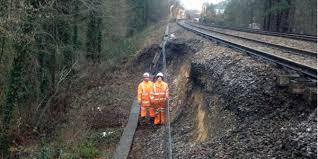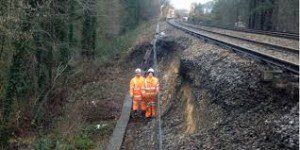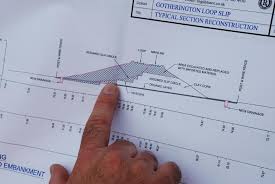
Failing Rail Embankments – Victorian Legacy?
10/03/2014 - posted in Civils, Geoenvironmental, HBPW News, Rail The legacy of Victorian England’s rail engineers, coupled with torrential downpours, has most probably been the primary cause of failed embankments and landslips on Britain’s rail network.
The legacy of Victorian England’s rail engineers, coupled with torrential downpours, has most probably been the primary cause of failed embankments and landslips on Britain’s rail network.
That is the view of HBPW’s Managing Partner, Paul Withers, as a single track line between Eastleigh and Fareham in Hampshire experienced three landslips within half a mile, resulting in the line’s closure.
“It is almost inevitable that a railway will be on an embankment or in a cutting,” said Paul. “When they were originally built more than 100 years ago, engineers probably made the side slope angle to the embankment too steep, in order to minimise the material required as part of the construction process.
“At the time they didn’t have quality control of materials in the way we do now, and there were no formal standards of compliance; material taken from a cutting may well have been used to create the embankment. However, where clay was used, this substance cracks to a certain level, letting in water, and the build up of hydrostatic pressure can cause a catastrophic failure, bringing about collapse and line closure.
“Added to this the Victorians probably wouldn’t have had the best compacting equipment and methods available, further exacerbating the potential problem. To some extent our Victorian forefathers have left us an engineering legacy which is coming home to roost, courtesy of the extreme weather we are now experiencing in the UK.”
The Hampshire line at Fareham aims to be open again by mid March.
